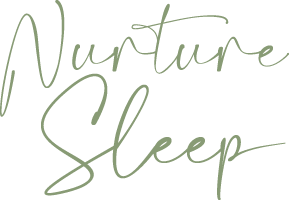
Sudden Unexplained Death in Infancy and Safe Sleep
This is a hefty and confronting topic but one that is so very important to talk about and bring awareness to. As a baby sleep consultant an essential part of my job is to educate parents and caregivers so they understand firstly what SUDI is, what the risks are, and how to minimise them to ensure their precious baby is, at all times, safe while asleep.
Sudden Unexplained Death in Infancy (SUDI) is an umbrella term that includes Sudden Infant Death Syndrome (SIDS), undetermined cause of death and accidental suffocation or strangulation in bed. In days gone by, this was simply referred to as Cot Death, but as better pathology, diagnosis and understanding of these tragically sad infant deaths has emerged, the definition has also evolved to reflect this.
The most current scientific research shows that there are three factors that increase the risk of an infant dying from SIDS.

- The infant is in the critical development period, which is birth to six months;
- The infant is classed as a vulnerable infant – this is an infant with a dysfunctional or immature arousal or cardiorespiratory system. These infants do not have the same level of protective response to their airway being obstructed or compromised; and
- External stressors that place the baby at risk, such as sleeping on their tummy, having loose blankets or items in the cot, co-sleeping with a parent especially if that parent is a smoker or is under the influence of drugs or alcohol.
From birth to six months it is a given that your baby will fall into the critical development period, so this factor will always be present. It is important to understand that there is currently no way of knowing if your baby is a vulnerable infant or not, so this second factor may or may not be present. For this reason, it is critical that safe sleep guidelines are followed in order to minimise the risk of there being any outside stressors and putting your baby at risk of SUDI.
IT IS RECOMMENDED THAT THE FOLLOWING SAFE SLEEP GUIDELINES ARE ALWAYS ADHERED TO:
- Your baby is always put to sleep on their back on a flat, firm surface to avoid positional asphyxiation that can occur when a baby’s head is tilted forward, blocking their airway.
- There are no loose blankets, toys or cot bumpers in their sleeping space that could cover their face or obstruct their airway. It is safer to avoid all blankets in a cot by dressing your baby in appropriate layers underneath a swaddle or sleeping bag.
- The head and face are always kept free from clothing such as hats and hoodies before put down to sleep. If swaddled, make sure that the swaddle does not cover the head or face in any way and that it cannot ride up over the face.
- Any comforter is kept to the size of a handkerchief and is made from breathable material such as muslin. A comfort toy should only be introduced once your baby is unswaddled and has the coordination and ability to consciously move objects.
- Your baby’s cot or crib is free from a baby nest or pod as these can result in your baby rebreathing carbon dioxide. A baby should never be left to sleep unsupervised in a baby nest or pod.
- You are not co-sleeping with your baby, however, room sharing is encouraged if the sleeping environment is safe (see below).
- Your baby is not room sharing with a smoker and is not co-sleeping with anyone under the influence of drugs or alcohol.
- Breastfeeding your baby is recommended if that is a viable option for you and your baby.
Scientific research has shown that babies who sleep on their sides have double the risk of SUDI, and if they sleep on their tummy the risk of SUDI is six times higher again than if they were sleeping on their back. When the US adopted the “Back to Sleep” campaign in 1994, infant death rates decreased by a whopping 50%. Generally speaking, once your baby can roll from their back to their tummy completely unaided, it is safe for them to sleep on their tummy, however, if your baby is rolling themselves on to their tummy then they must be unswaddled.
If you would like further information on SUDI and safe sleep guidelines, or if you would like me to assess your baby’s sleeping environment to ensure that it is safe, please do not hesitate to reach out.





